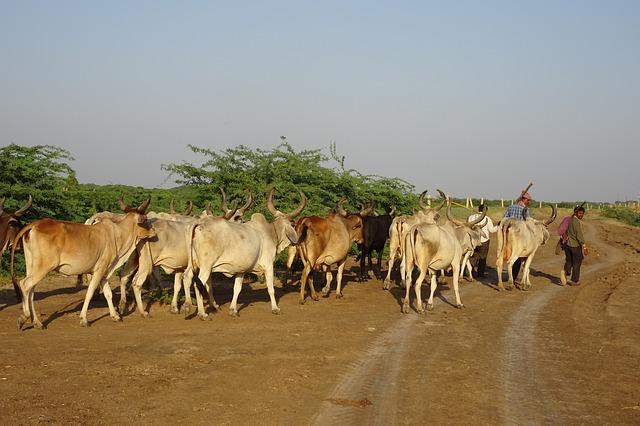
Much has been debated on the miracle growth of Gujarat’s agriculture, particularly after 2003-04. Before that, agriculture in the state was low-performing and high fluctuating. The high growth performance was explained by factors like the boom in bt-cotton cultivation, power sector reform (‘Jyotigram Yojana’, which provided regular, high-quality three-phase electricity to all villages), innovative extension model (‘Krishi Mahostav’, bringing scientists to the door step of farmers), increase in the use of inputs like fertilisers and high yielding seeds etc. The much hyped ten per cent growth story of Gujarat’s agriculture seems to have been associated with the favorable monsoon during the period.
At an all India level, the slowdown of agricultural growth and distress in the agrarian sector is the effect of the rising costs of cultivation, inability to cope with the vagaries of rainfall, indebtedness and bottlenecks in agricultural marketing, to mention only a few – leading to acute distress of farmers. The increasing distress of the agrarian sector is due to the lower growth in income of farmers; after 2011-12 the growth rate of farmer’s income was only one per cent.
However, the growth rate has collapsed in the recent period and it was as low as 3.7 per cent between 2003 and 2015. An unfavourable monsoon season between 2012-13 and 2015-16 combined with volatile market prices led to a decline in the growth rate of the sector. The decline in the growth of the sector is mainly due to failure in crop production; even the positive growth of the livestock economy couldn’t help much.The production of major crops like cotton, groundnut and maize has dropped, particularly after 2010-11, and the yield of cotton and groundnut has remained stagnant (as noted by the socio-economic Review of Gujarat, 2017).
At an all India level, the slowdown of agricultural growth and distress in the agrarian sector is the effect of the rising costs of cultivation, inability to cope with the vagaries of rainfall, indebtedness and bottlenecks in agricultural marketing, to mention only a few – leading to acute distress of farmers. The increasing distress of the agrarian sector is due to the lower growth in income of farmers; after 2011-12 the growth rate of farmer’s income was only one per cent. The present government’s decision to double farmer’s income by 2022 came in the middle of the agrarian crisis, which might be a huge challenge to achieve. Among the 18 major states, income from crop cultivation in Gujarat ranks 11, which is below the national average (Situation Assessment Survy-NSSO 2014). Using the SAS-NSSO data for 2003 and 2013, Chandrasekhar and Mehrotra (2016) show that the net income from crop cultivation of the farmers has increased by 1.34 times, at the all India level and only 1.18 times, in Gujarat. Though the total income of the farm household has increased by 1.36 per cent in the state the income from cultivation which constitutes around 60 per cent of the total income of the agrarian households has not shown the required growth rate.
Cotton is one of the major crops cultivated in Gujarat, constituting around 20 per cent of gross cropped area (2015-16) but the cost of cultivation of the crop is highest due to the higher price of seed and fertiliser. The minimum support price set by the government to assist the farmers is irrelevant. The MSP for cotton needs revision as the cost of cultivation is increasing fast.
However, it is not clear whether the government is concerned about the real increase in income or unadjusted nominal income. The calculation by Satyasai and Mehrota (2016) shows that doubling the income in real terms would take beyond 13 years. Income from other non-farm sectors might not take such a long period to be doubled, as the income from non-farm sectors and salary increases faster than income from cultivation. This raises serious concern about the viability of the sector and the incentive to work as a farmer.
Cotton is one of the major crops cultivated in Gujarat, constituting around 20 per cent of gross cropped area (2015-16) but the cost of cultivation of the crop is highest due to the higher price of seed and fertiliser. The minimum support price set by the government to assist the farmers is irrelevant. The MSP for cotton needs revision as the cost of cultivation is increasing fast. The MSP should be double the cost of cultivation for farmers to be receiving a reasonable price. It is only recently that the government announced additional MSP for cotton. As reported elsewhere, the additional increase in the MSP for cotton is mainly due to the upcoming election.
Around 43 per cent of the farm households are indebted in Gujarat by 2012-13 and a major chunk of farmers as reported by NSSO “do not like” farming as a profession. They are stuck with farming due to a lack of other income earning opportunities. The farming community as a whole is in a vulnerable situation with increased marginalisation of the agricultural sector, as around 55 per cent of the total agricultural workers work as wage labours. The proportion was reverse during 2001 census, highlighting the non-profitability in the sector, and hence the decline of cultivators and cultivation.
Withdrawal of the younger generation from farms, as they migrate in search of better job opportunities, declining investment, increasing burden of input cost etc. makes deciding a future in farming uncertain and unattractive. The huge and increasing burden of per-hectare inputs of the cost of cultivation leads to decline in crop profitability and makes the farmer disinterested in farming. Thus, the vision of current government to double farmer’s income seems to be more like a slogan rather than a strategic policy to be achieved by the year 2022.



